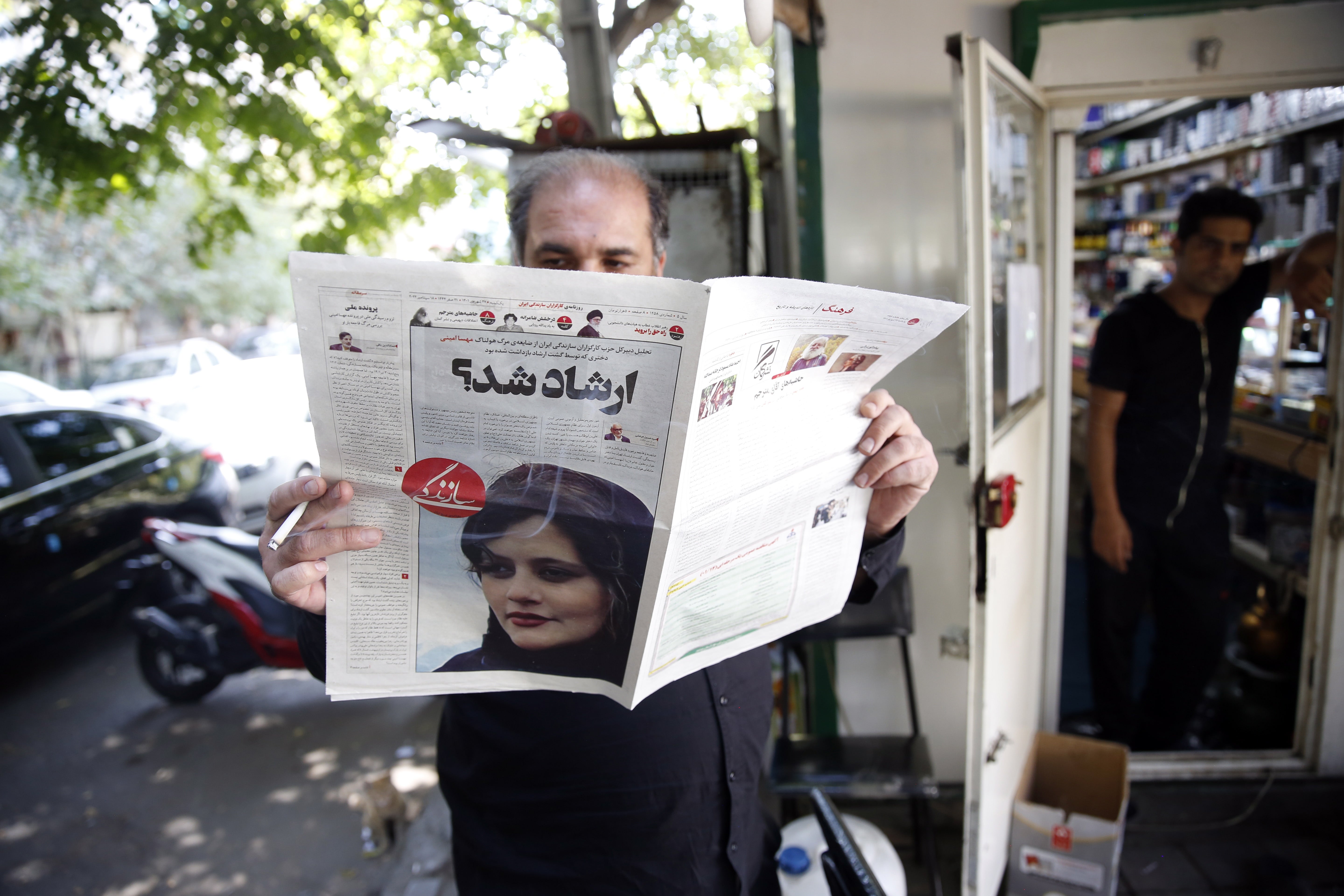A young woman is dead. The values at the heart of Iran’s regime are to blame
Iran’s morality enforcers regularly harass young women for letting a bit too much hair peek out of their mandatory headscarves, or allowing skin to show at their ankles, writes Borzou Daragahi


She was a 22-year-old full of life and dreams, visiting Tehran for what was likely the kind of trip taken by many Iranians, attracted to the capital for its frenetic pace and relatively relaxed cultural atmosphere.
On Friday, Mahsa Amini died after falling into a coma following her arrest on 13 September, by the regime’s morality enforcers, for the crime of wearing “bad hijab” – that is, being improperly or immodestly dressed.
Iranian regime broadcasters have released inconclusive video footage suggesting that she collapsed on her own after her arrest. But there are credible allegations that she was savagely beaten while in custody, perhaps in the police van in which she was carted off to jail for what authorities called “education”.
Iranians inside and outside the country are outraged, and rightly so. Regardless of whether Amini was physically abused or not, the regime had her in custody on a ridiculous charge, and they deserve all the scorn they are getting. Protests have erupted outside Tehran’s Kasra Hospital, where she died, as well as at her funeral on Saturday morning, and in cities around the country.
Human rights groups often call on Iran to stop arrests for such crimes. What they sometimes miss is just how vital such repression and harassment campaigns are to the survival of the regime.
Iran’s morality enforcers, formally called guidance patrols, frequently harass young women for letting a bit too much hair peek out of their mandatory headscarves, or allowing skin to show at their ankles. Men are also occasionally targeted.
The arrests are often arbitrary, with enforcement ebbing and flowing seemingly at random. Sometimes women wearing the skimpiest of headscarves are ignored. Sometimes wearing too much make-up is considered a violation. Sometimes young men in shorts are arrested, while older joggers on runs are not.
Wear a bright smile and a dour outfit and you might get stopped. Frown and wear a skimpy overcoat and you might be allowed to pass unbothered. The helter-skelter approach is by design. It keeps everyone on their toes and frightened, on the back foot, lest they are forced to spend the night in jail and pay a fine.
The enforcers themselves are often bitter, underpaid apparatchiks culled from the pious lower classes and set upon their better educated and more cosmopolitan fellow citizens. It is an artificially fostered class war, meant to distract, degrade and humiliate both segments of society, to make them more manageable.
Meanwhile, the clerical and security elite pilfer the country’s coffers and play geopolitics with public funds, seeking glory to sustain the Islamic Republic. Identity politics keep the base loyal. Repression keeps the opposition weak and scared. It is a formula that has kept the regime in power for 43 years. But it is also one that is enraging to the bulk of society, and this time it appears it has gone too far. And the regime knows it.
President Ebrahim Raisi and parliamentary speaker Mohammad Baqer Qalibaf are calling for urgent investigations into Amini’s death. But both leaders represent hardline factions that are among the pillars of Iran’s incessant harassment and repression of women.
Interior ministry official Majid Mirahmadi vowed that an investigation into the death would proceed “with speed, without prejudgement and with evidence”. But Iranian officials have blatantly lied so often about such incidents that they have little credibility, and Iran has a long history of brutalising women for speaking their minds.
There was the 2003 case of journalist Zahra Kazemi, the Canadian-Iranian journalist who was locked up in prison and savagely beaten to death in an incident that has soured Tehran’s relations with Ottawa for nearly two decades.
During protests in 2009 after the disputed re-election of a hardliner, a militia gunman shot dead Neda Agha-Soltan, a young woman who was protesting. Another woman, Sepideh Rashno, was arrested in July for wearing allegedly inappropriate clothing, beaten until she made a “forced” confession on television, and now faces a prison sentence.
In another case, two Iranian LGBT+ activists are facing death sentences on trumped-up “human trafficking” charges after one of them gave an interview to BBC Persian about what life is like for sexual minorities in Iran.
The regime’s obsession with targeting outspoken women has even extended abroad, where the regime allegedly hired armed henchmen to stalk and possibly harm the outspoken exiled anti-hijab activist and journalist Masih Alinejad outside her New York City home.
The regime has reportedly put pressure on Amini’s family members to keep quiet, but they continue to speak out. “The cause of the accident is as clear as day,” Amini’s uncle reportedly told the Centre for Human Rights in Iran, an advocacy organisation based outside the country. “What happens when they grab girls and stick them in the car with such ferocity and terror? Do they have the right? They know nothing about Islam, nor humanity.”
To keep up to speed with all the latest opinions and comment, sign up to our free weekly Voices Dispatches newsletter by clicking here
Making matters even more potentially treacherous for the regime, Amini was an ethnic Kurd, a native of the small city of Saghez, and her death has riled up the country’s most volatile and politically active ethnic minority. A coalition of ethnic Kurdish groups has called for a strike to take place on Tuesday over Amini’s death.
At gatherings in front of the hospital where Amini died and at her burial, protesters chanted slogans calling for the death of supreme leader Ali Khamenei. Enraged women publicly removed their headscarves in protest. Clashes between protesters and police erupted in several cities, including the capital, and there were reports that gunfire and teargas were directed at unarmed demonstrators.
All this is coming at a time when the country’s economy continues to flounder, in part because of sanctions imposed over its atrocious human rights record as well as its nuclear programme.
Amini’s agonising death and Iran’s broader troubles will cast a dark shadow on Iran as Raisi appears at the United Nations in the coming days. The irony will be bitter. Standing at the dais addressing the General Assembly in New York, watched by the world’s cameras, the black-turbaned cleric will be able to rail freely against “the West” and America for their supposed ills. At the same moment, young Iranian women like Amini will continue to face the prospect of death or jail just for peacefully expressing themselves.






Join our commenting forum
Join thought-provoking conversations, follow other Independent readers and see their replies
0Comments